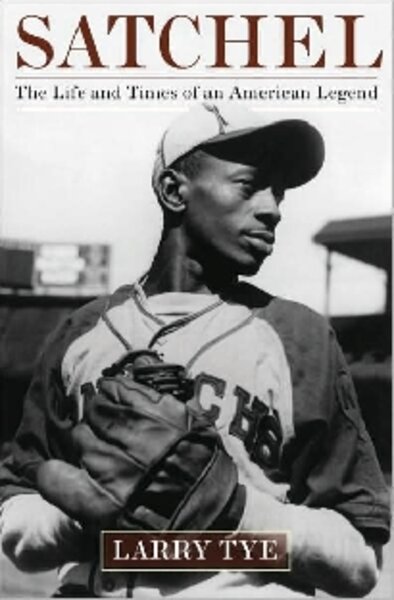Satchel: The Life and Times of an American Legend
Loading...
It’s about time somebody wrote a good biography of Satchel Paige, the great baseball pitcher, personality, showman, and entrepreneur. In Satchel: The Life and Times of an American Legend, journalist Larry Tye has done just that.
Paige spent most of his long career playing in the relative obscurity of the Negro Leagues, where records were kept haphazardly and statistics are notoriously sketchy. Paige also worked overtime carefully tending to and embellishing his own legend. Tye interviewed more than 200 former ballplayers, associates, and family members, and combed through the voluminous written record on Paige, to piece together the best (and nearly the only) thorough account to date of one of baseball’s most fascinating and important figures.
He was born Leroy Robert Paige, a poor boy in the post-Reconstruction South. He earned his famous sobriquet working as a porter at the L&N Railroad station in his hometown of Mobile, Ala., carrying (and occasionally stealing) suitcases, or satchels. He learned to love baseball as a young boy. His long arms and legs were perfect for hurling a baseball from the mound to home plate, which he learned to do with astonishing speed.
After honing his pitching skills during a five-year stint in reform school, he played for several semipro teams in Mobile. In 1926, at the age of 20, he joined the Chattanooga (Tenn.) Black Lookouts, of the Negro Southern Leagues. He was still at it almost 40 years later when, at the age of 59, he pitched three scoreless innings for the Kansas City Athletics.
In between were stints with the Pittsburgh Crawfords and Kansas City Monarchs, two of the most storied teams in the Negro Leagues, as well as turns in Mexico and the Caribbean, barnstorming the back roads with and taking innumerable turns for any team owner willing to rent his services for a few innings to fill the stands.
Paige’s blazing speed and pinpoint accuracy baffled his opponents and delighted his fans. Then there were his antics, like showing up late, shuffling slowly out to the mound and (occasionally) having his fielders sit down while he struck out the side. Off the field he became known for his outsized personality, homespun aphorisms (“How old would you be if you didn’t know how old you were?”), contract jumping, womanizing, and all-around large living.
When the Saturday Evening Post, America’s most popular magazine, published a four-page article on him in 1940, Paige was a household name and one of the most famous African-Americans of the day.
“The formula was always the same,” Tye says of Paige’s recipe for attracting fans by the tens of thousands. “Use humor to disarm those who think they hate you, then dazzle them with your talent.... White onlookers loved that he was unthreatening and unstoppable, blacks loved that he could lick the finest that whiteball threw against him.”
Paige’s shtick played into popular, highly negative stereotypes of black behavior. Were his Stepin Fetchit-type antics really “his way of bucking the system” and “a brilliantly defiant parody” deliberately concocted to combat racism, as the author suggests? That is a stretch, but Tye makes a very convincing argument for Paige’s important and underrecognized role as a trailblazer in race relations and a force for integration.
In the 1930s, Paige played for an integrated team in Bismarck, N.D., showing that black and white players could play, not just on the same field, but even on the same team, without dire consequences. For many years in the 1940s, Paige headed an all-star team of black players that went on hugely lucrative barnstorming tours against white all-star teams, headed first by Dizzy Dean and later by Bob Feller.
There is no doubt that pitting a black team against a white team added an extra element of crowd-pleasing drama to the contests, but the games also demonstrated that the best of the Negro League players were every bit as skilled as their white major-league counterparts.
“In his own way,” writes Tye, “he was as important a race trailblazer as any who surfaced in that era of baseball or America.”
As pressure built for organized baseball to integrate, most assumed Paige would be the first African-American player to cross the line. When that honor – and burden – fell to Jackie Robinson, Paige was resentful. But he got his turn the next year, signing with the Cleveland Indians and helping them win the 1948 American League pennant.
It may have been Jackie Robinson who finally opened the door, but, as Negro League veteran Minnie Minoso put it, it was Satchel Paige who inserted the key.
David Conrads is a freelance writer in Kansas City, Mo.






